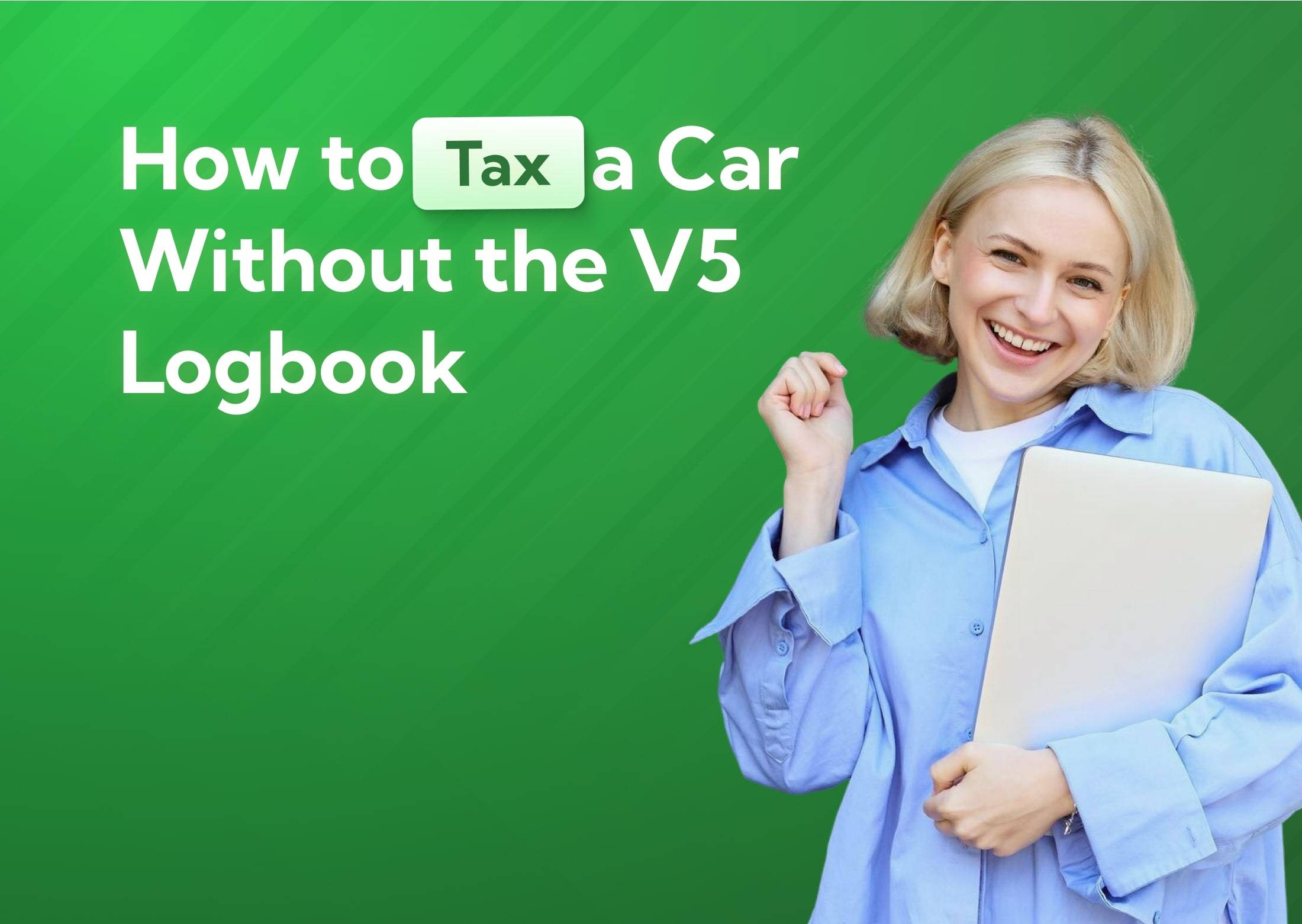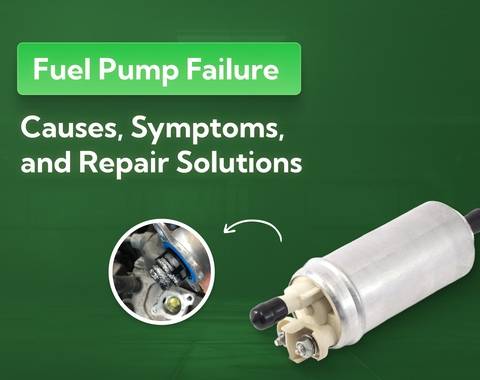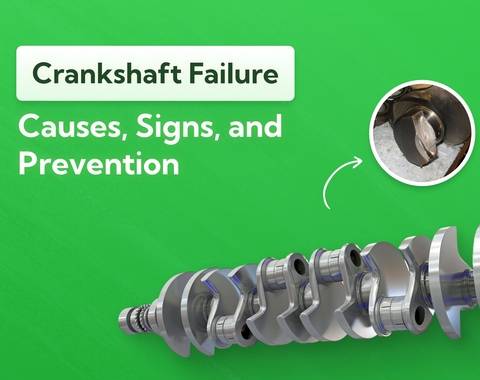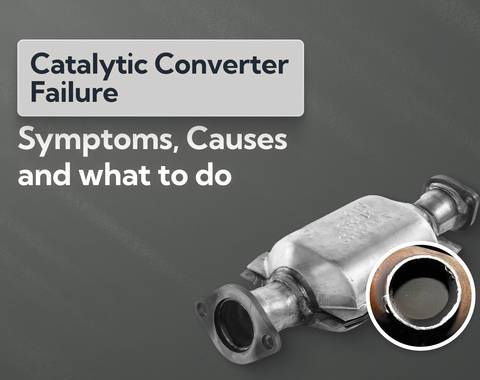How to Tax a Car Without the V5C Logbook (2025 Guide)
Lost your V5C? Don’t panic. In this guide, we’re going to tell you exactly how to tax a car without the V5C logbook. We’ll also tell you how to apply for a new logbook to save time in the future, and go into all the rules and regs around V5Cs and taxation you need to know before hitting the road.
Last updated: 17th October, 2025

Award-winning CEO driving growth and social impact across automotive, recycling, and technology-led enterprise platforms.

Listen to this story
Your V5C logbook is an essential piece of kit, but car owners often lose it. Luckily, getting a new one is a fairly straightforward process. But that’s not always enough: you might need to file your car tax, for instance. In which case, there’s no time to waste. You might not even realise you’ve lost your V5C until it’s too late!
We’ve got your back. If you’re wondering how to tax a car without V5C documentation, you’ve come to the right place. Today, we’re going to give you a handy step-by-step guide on how to do it, as well as how to apply for a new V5C logbook!
Let’s get stuck in.
What's in this article
- 1. Why Is the V5C Logbook Important for Car Tax?
- 2. Can You Tax a Car Without the V5C Logbook?
- 3. Documents You Can Use Instead of the V5C Logbook
- 4. Step-by-Step Guide to Taxing Without the V5C
Why Is the V5C Logbook Important for Car Tax?
When it comes to taxing your vehicle, you’ll notice the government you’ll need your vehicle log book (sometimes called the V5C or the V5 logbook). The reason for this is simple: the V5C proves you own the vehicle.
Every V5C logbook contains:
- Date of first registration
- Current registered keeper
- The previous registered keeper
- Vehicle details (like model and engine size)
- Forms for changing details if they change
As only the registered keeper of a vehicle can tax it, you therefore need a valid V5C.
Can You Tax a Car Without the V5C Logbook?
Don’t have a V5C logbook? Good news: you can technically tax your car without it. However, the process may not be quite so simple without one. Without the V5C, you’re going to need to prove you own the vehicle another way.
Many drivers mistakenly imagine that MOT and insurance records are enough to provide this evidence. However, that’s actually wrong. Such records are certainly needed for taxing a vehicle, but they aren’t enough on their own! They don’t, legally speaking, tie the car to your name.
Here’s what you’ll need instead:
Documents You Can Use Instead of the V5C Logbook
If you don’t have a V5C logbook, you probably fall into one of these three categories:
- Didn’t receive V5C with purchase - it’s technically legal to sell a car without a V5C form, so some owners never have one to begin with. Note: we always recommend making sure any vehicle you buy comes with a V5C. If this is you, you should apply for a V5C logbook online immediately.
- V5C lost, stolen, or damaged - since a handy 2024 update, drivers can tax their vehicles without a V5C. However, you can only do this if you apply for V5C at the same time. This will cost £25, and you can apply either online (as long as the details don’t need to be changed) or in-person at a Post Office. This means you can technically tax a vehicle without waiting the week or so for your new V5C to arrive.
- New keeper - if you’ve just bought the car, you might have received a green “new keeper slip” (V5C/2) instead. This should contain all the information you need to tax your vehicle online as you would with a V5C. It’s just a slightly different document.
You can also use a DVLA reference code instead of a V5C in some circumstances. If you’ve received a reminder letter (V11) or a last chance warning (V85/1), these include a 16-digit reference number you can use online or by phone to tax the car.
Step-by-Step Guide to Taxing Without the V5C
Here’s how to tax a car without V5C documentation in different situations:
How to Tax a Car Online With a V5C/2 Slip
Taxing a car with a green “new keeper slip”, the V5C/2, is as easy as taxing with a V5C logbook, so you shouldn’t have any trouble. You can do it online in just a few minutes.
Simply follow these steps:
- Go to the DVLA vehicle tax page. Make sure you have your green V5C/2 slip to hand.
- When prompted, enter the 12-digit reference number from the slip.
- The system will automatically check MOT and insurance.
- Pay for the tax by card or direct debit, and you’re done.
How to Tax at the Post Office Without a Logbook
If you’d prefer to tax your car in person, you only have one option: you’ll need to head to your nearest Post Office that deals with tax. Don’t forget, if you’re using this method, you’ll have to pay your tax and send off for a new V5C logbook at the same time. There’s a charge for this. Find the details below:
- Fill out a V62 form (this is the application for a new logbook).
- Take it to the Post Office (make sure the office in question handles tax matters).
- Bring your MOT and insurance details (checked electronically).
- Pay £25 for the replacement V5C, plus your vehicle tax.
- The Post Office will issue the tax immediately, and the DVLA will send your new logbook.
Using a DVLA Reference Code Instead
You might be able to use a 16-digit DVLA reference code instead of a V5 or a V5C/2. These are included on reminder letters (V11) and last chance warnings (V85/1). The process to tax your car with this code is the same as taxing online by any other method:
- Go to the DVLA vehicle tax page.
- Enter your 16-digit reference code when asked.
- Pay the tax.
What to Do If You Have No Documents at All
No logbook, V5C/2, or DVLA reference code? Don’t worry, you still have a way forward. However, it’s imperative that you act straight away as delays can lead to fines. If you don’t have any documents you need to pay your car tax, you’ll have to apply for a new logbook.
Follow these steps:
- Go to the DVLA website and apply for a vehicle registration certificate (form V62). Alternatively, you can take the form (and the fee) to the Post Office.
- Pay the fee.
The DVLA will send your new logbook as soon as possible. But don’t worry - as long as you’ve paid the tax, it’s all sorted.
What the experts say

Anthony Sharkey
How to Apply for a Replacement Logbook (V62 Form)
Even if you don’t technically need a V5C logbook to tax your car, we still recommend getting one. Not only does it make the process 10x easier, it can also increase the value of your car. Dealers generally offer lower prices for vehicles without them.
Luckily, getting a replacement logbook is easy. You can do it online if your V5C details don’t need updating, or at the Post Office if they do. Either:
Apply for the replacement logbook with the V62 form on the DVLA website.
Or;
Take your completed V62 form to a Post Office that handles car tax.
Cost and Processing Time
It currently costs £25 to file a V62 form (replacement logbook form). You can pay this online with a debit or credit card, by cheque, or via a postal order.
How long it actually takes to get the new logbook depends on the method of order. If you applied online, it should only take around 5 days to arrive. If, however, you applied in-person at the Post Office, it could take up to 6 weeks.
Don’t forget, if you pay your car tax and apply for a new V5C at the same time, the vehicle is considered “taxed” even before the logbook arrives!
Taxing While Waiting for the Replacement
The good news is that your car is officially taxed as soon as you’ve paid the money. So, even if you’re still waiting for your new V5C logbook to arrive, your vehicle is technically taxed. This means you can drive it as normal.
Common Problems and Fixes When Taxing Without a V5C
Taxing a vehicle without a V5C may be possible, but it’s usually more complicated. With that in mind, it’s not uncommon to come up against hurdles. Luckily, Car.co.uk experts are here to give you all the quick fixes you need!
Here are the most common problems when taxing a vehicle without a V5C logbook:
- Wrong details on the “new keeper” slip - sometimes, the seller might make a mistake filling out the V5C/2 slip. If that happens, the system could reject it.
To fix this, you’ll need to apply for a replacement V5C using a V62 form with the correct details. You can do this at the same time as applying for a new V5.
- MOT or insurance records not matching - Sometimes the DVLA system can’t confirm MOT or insurance. However, you might still be properly covered. You’ll need to find out by getting in touch with the right authorities: For MOT issues, check your vehicle is on the MOT history service. If it isn’t, you should contact the garage that tested it right away. For insurance issues, check with your insurer that the car is on the Motor Insurance Database.
- DVLA processing delays - although an online application should take no more than five days, the postal service can take up to six weeks. As long as you’ve paid tax at the same time, this shouldn’t be an issue. If your new logbook doesn’t show up within six weeks (which is very rare), get in touch with the DVLA.
Risks of Driving Without Proper Tax or V5C
Driving an untaxed vehicle on public roads is a criminal offence. There are hefty consequences to doing so.
For starters, you’ll incur an £80 fine. That might not seem like much, but bear in mind that that can rise to £1000 (plus potential legal fees) in some cases, plus leave you with a criminal record.
Your car can even be clamped, impounded, or even crushed in certain circumstances.
Driving without a V5C logbook is different. A V5C is not a legal requirement. You won’t face any legal repercussions for not having one. However, it can still cause problems when:
- Proving vehicle ownership.
- Selling or scrapping the car later down the line.
- Renewing or managing your tax efficiently.
To make your life easier, we highly recommend you get and keep a V5C logbook.
Best Practices for Taxing Without a V5C
While driving without a V5C is legal, we recommend getting one. However, if you’re still waiting for your new V5C to arrive, but plan on driving, there are a few best practices you should follow:
- Always keep a digital copy of DVLA receipts - in case there’s ever a system error, a screenshot or saved receipt can come in very handy when you need to prove ownership.
- Apply for a replacement V5C immediately - Don’t wait until your tax or MOT runs out. Submitting a V62 early avoids being left without valid paperwork.
- Double-check MOT and insurance validity - never assume everything’s in order. Always make sure both your MOT and insurance details are up to date before you try to tax your vehicle. After all, the DVLA system won’t let you use the service without them. Checking beforehand can save you a lot of time and bother.
Final Thoughts
In short, it’s possible to tax a vehicle without a V5C logbook, it just takes a few workarounds. You’ll need either a “new keeper” slip (the V5C/2) or a DVLA reference code from your reminder. The easiest and best way, however, is to apply for a V5C at the same time you pay the tax itself - this way, your tax is treated as “paid” and you’ll get a new V5C.
As for how to tax a car without V5C documentation, it’s fairly straightforward. The easiest way is via the DVLA website. You can also apply at Post Offices that handle tax - just remember you’ll need to pay the £25 fee!
About Car.co.uk

Frequently asked questions
Yes. You can go ahead and tax a car via the DVLA with the 12-digit reference number from your new keeper slip (officially called the V5C/2).
It depends how you applied for it. If you applied online, it should be with you in about five days. If you applied in person at the Post Office, it can take up to six weeks. We recommend applying online if you can!
Yes, you can. You don’t need a V5C to drive your vehicle. However, you’ll still need an up-to-date MOT and valid insurance!
You’ll still be able to tax your car and drive on public roads, but you should apply for a new one as soon as possible. Just go to the DVLA website and follow the instructions on the V62 form.
Not usually. You generally need a valid MOT and insurance paperwork to tax your vehicle. The only exceptions are: no MOT required on a car that’s less than three years old, and no insurance needed with a SORN certificate.
Yes, but you’ll need to apply for a new logbook at the same time. Take along a completed V62 form to save time. The Post Office staff should be able to help you with everything else.
You won’t face any legal repercussions, but you might still feel the consequences. Cars without V5Cs tend to sell at lower prices and it can make filing other paperwork more complicated. It’s best to get one.
Technically, no. However, it’s far better to have one. Many buyers are rightly wary of buying cars without them, so you might find it hard to sell.
Not exactly. The V62 form is the document you need to apply for a new V5C logbook, not to tax a vehicle. However, you can file a V62 and tax your car at the same time either online or at the Post Office.
Probably, yes. The DVLA carefully inspects details to make sure everything’s above board, so if anything’s off with your MOT, insurance, or V5C details, it could delay the process. Save time by making sure everything matches before you apply!
Share on
Latest news & blogs










